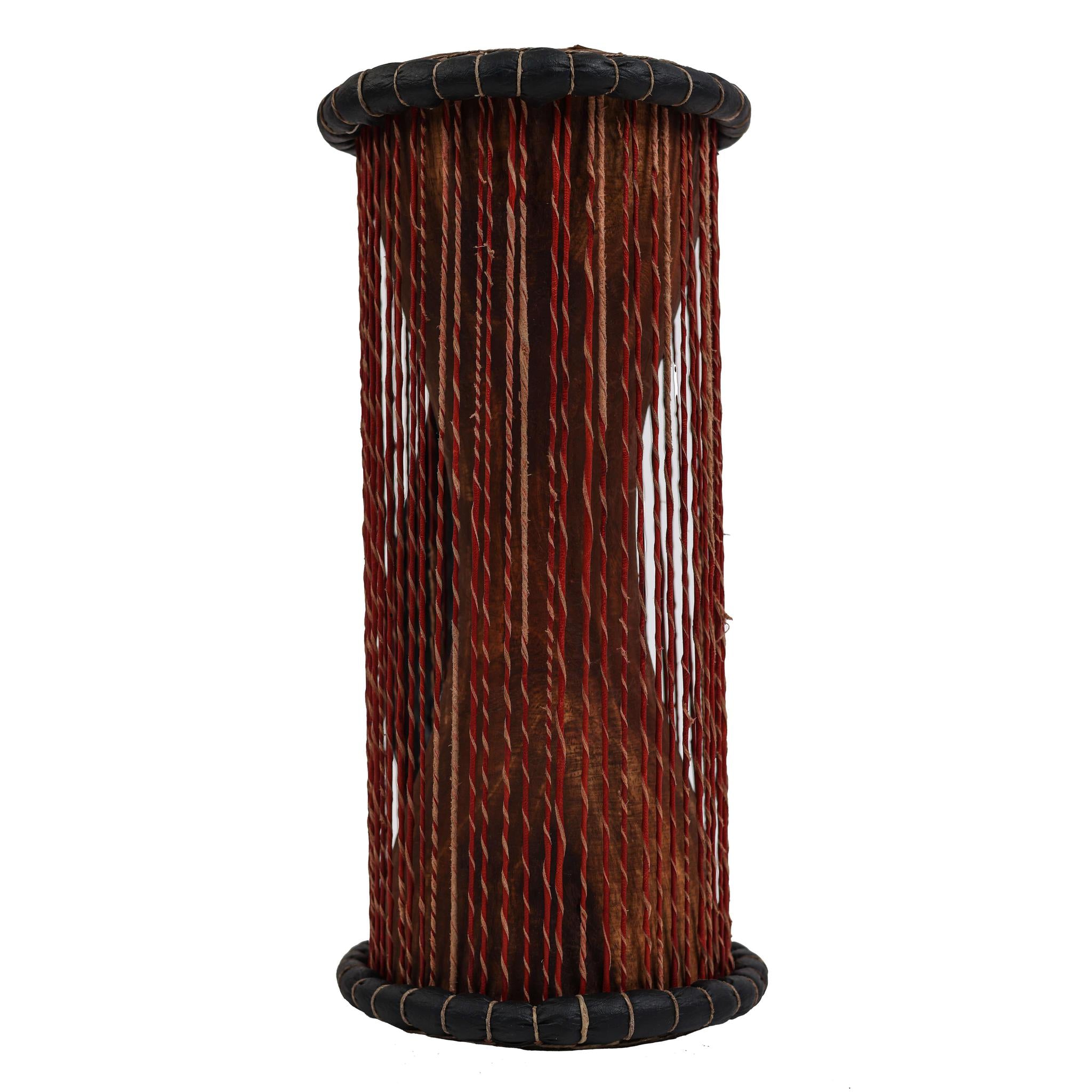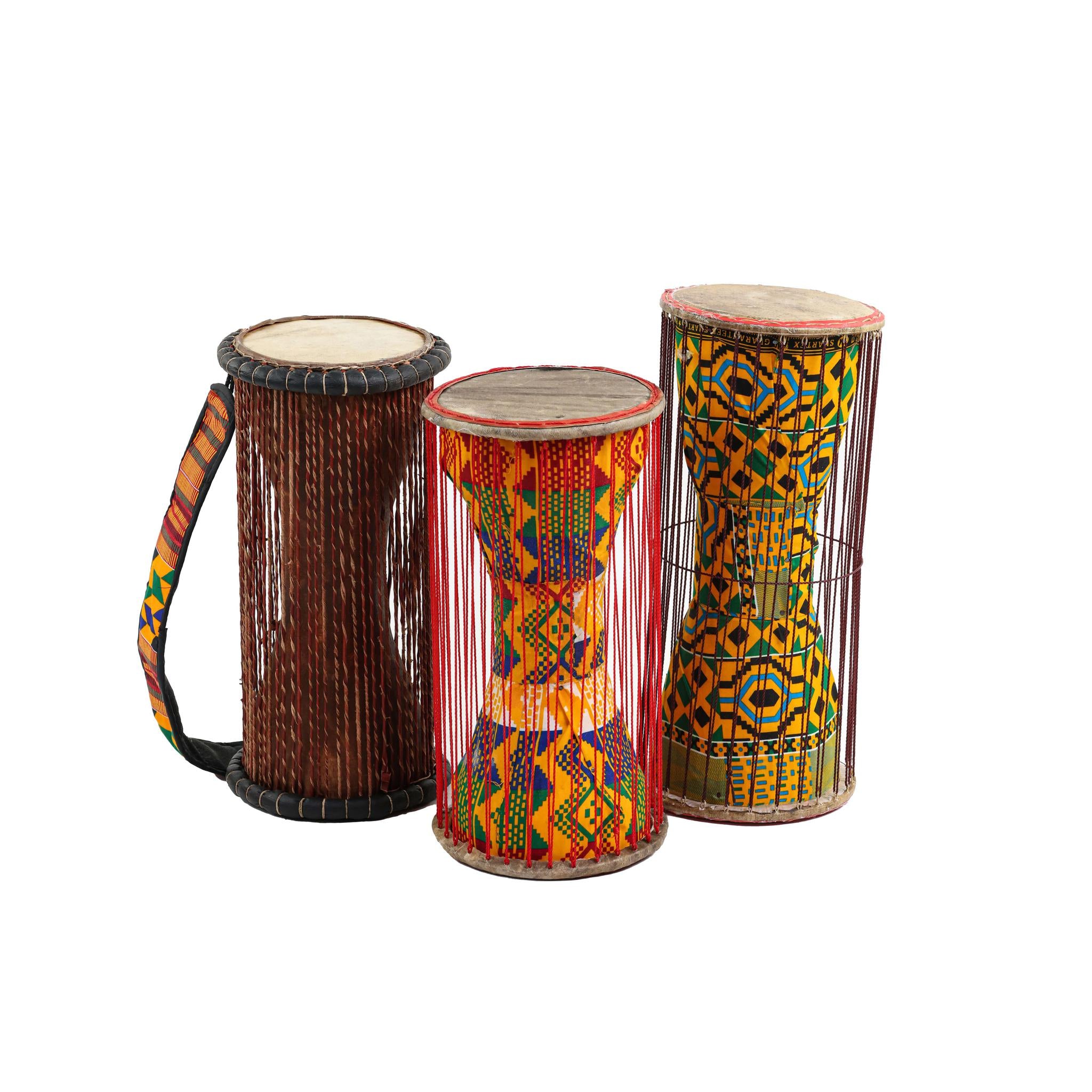Description
The Talking Drum, a revered instrument steeped in tradition, is meticulously crafted for a voice that resonates through the village. Its hourglass figure, hand carved from seasoned mahogany, embodies the patience and skill of the maker. Atop each end rests a taut Capra hircus hide, chosen for its exceptional ability to translate the subtle pressures of the player's touch into a captivating range of tones and inflections. This is not merely a drum; it's a potent instrument capable of weaving narratives, carrying news, and echoing the very soul of its community.
The talking drum goes by many names depending on the region and language in West Africa. Here are a few examples:
- Tama: Used in Senegal and Gambia (Serer language)
- Kalangu or Dundun: Found in Nigeria
- Other names: Dondo, Odondo, Tamanin, Luca Cappacio, Lunna, Donno, Igba, Doodo, Tamma, Gangan, Atumpan
Product Features:
- Color: Leather, Wood (Browns)
- Symbols & Details: Kente Shoulder Strap
- One-piece solid shell construction
- Materials: leather, wood shell, goatskin heads
- Type of instrument: Talking Drum
- Weight avg: X < 5 pounds
- Handmade: Yes
- Size: 17 x 7.5
- Drum head material: Goatskin (capra hircus hide)
- Details:
- Made in Ghana 📍
The Talking Drum: A Legacy of Communication
The talking drum, a treasured instrument with a vibrant history, has served as a powerful tool for communication and community for generations. Traditionally, its voice resonated in ceremonies, bringing people together for sacred rituals and celebrations. Ensembles of talking drums would weave intricate conversations, carrying news and pronouncements across villages. Today, the talking drum's legacy extends far beyond its origins. Its captivating voice continues to enthrall audiences worldwide, finding its way into diverse musical genres, from the infectious rhythms of Afrobeat to soulful jazz improvisations.
Embracing the Rhythm:
The talking drum, an instrument rich in tradition, invites you to become part of its story. To begin your journey, take a seat and find a comfortable position on the edge of a chair. Cross your ankles for stability, tucking them slightly under your thighs. Cradle the drum between your knees, letting the bottom rest comfortably behind your heels. This position allows you to control the drum with ease while unlocking its expressive potential.
A Conversation of Touch:
The talking drum responds not just to power but to the subtle nuances of your touch. Explore a range of sounds by striking the center of the head with the provided stick or your free hand. Experiment with varying hand positions – a loose grip creates a deep, open tone, while a tighter grip produces a higher, sharper sound.




